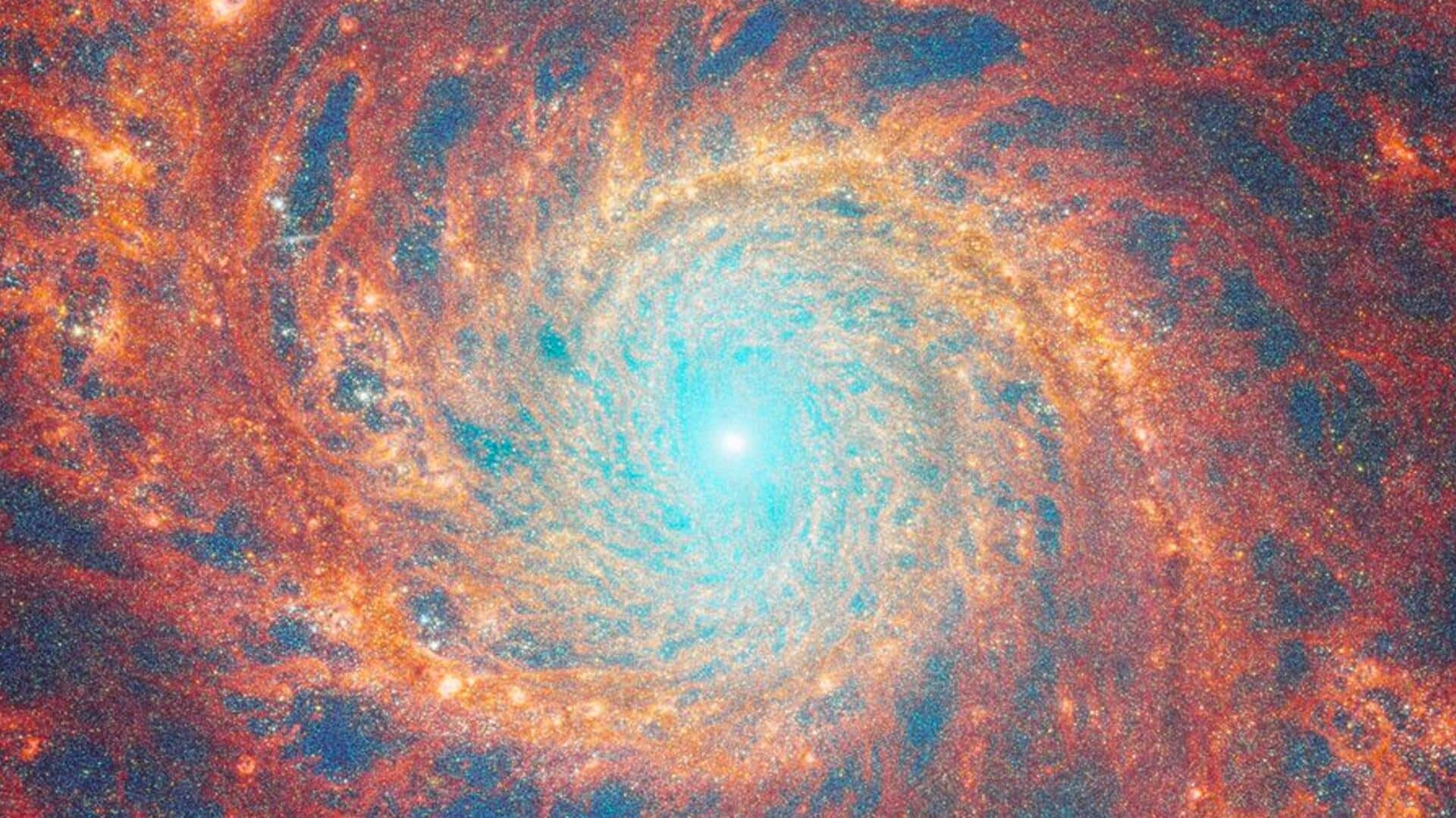
JWST reveals new details of star formation in nearby galaxies
What's the story
The James Webb Space Telescope's groundbreaking FEAST (Feedback in Evolved Astrophysical Systems with the Telescope) observations are providing valuable insights into stellar nurseries in galaxies beyond the Milky Way. One of the fascinating subjects of this study is M51, a grand-design spiral galaxy that showcases well-developed spiral arms. The galaxy is located in the constellation Canes Venatici, roughly 27 million light-years away from us.
Details
What does the new image reveal?
The M51 spiral galaxy occupies the central stage in the latest Webb image. The bright whitish core is the result of stars and dust and vivid orange structures are seen encircling the galactic core. The gravitation influence of its neighboring dwarf galaxy, called NGC 5195, is believed to be partially responsible for M51's distinct spiral arms, making this pair of galaxies an intriguing focus for researchers.
What Next?
Stellar feedback is key to star formation
Webb's observations are crucial for understanding the relationship between stellar feedback and star formation, which is essential for creating accurate universal models of star formation. Stellar feedback, which refers to the outpouring of energy from stars into their surrounding environments, plays a critical role in determining star formation rates. The FEAST observations offer unprecedented insights into this process by examining the early stages of star formation and the energy reprocessing of gas and dust.
Insights
Star clusters are seen emerging from their natal clouds
"Scientists are seeing star clusters emerging from their natal cloud in galaxies beyond our local group for the first time," according to the official ESA blog post. Additionally, the FEAST observations shed light on the time scales for the formation of planets and brown dwarfs, a celestial object that is between a planet and a star. These observations contribute to our knowledge of the universe's complex processes.